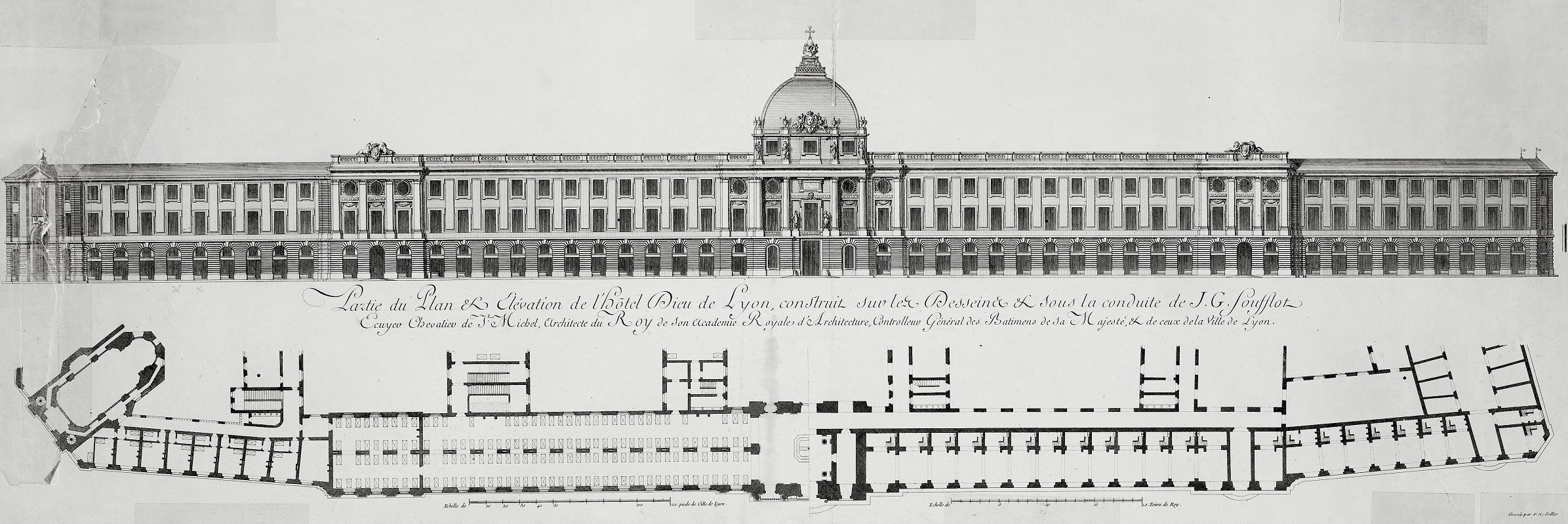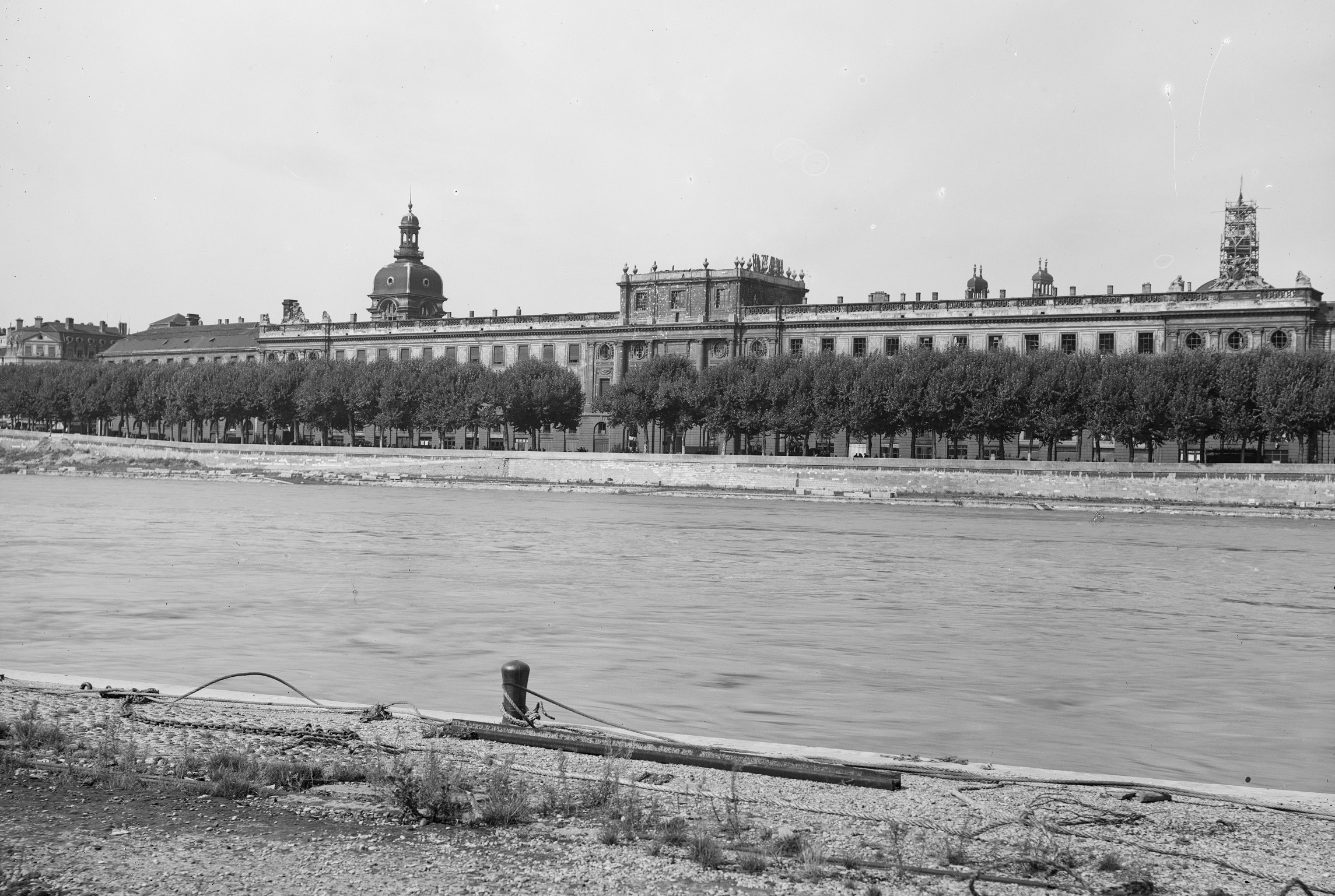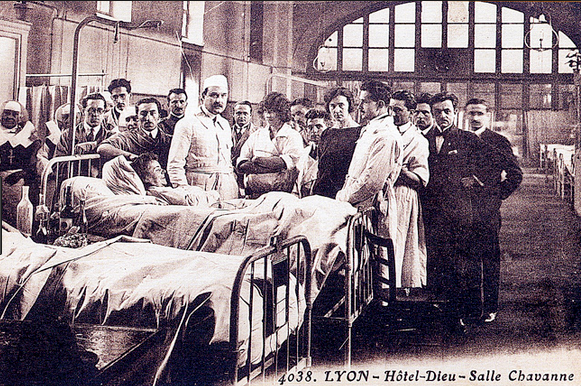- Middle Ages: We must go back to the 12th century to retrace the complete history of the hotel. His ancestor, the Pont du Rhône Hospital was erected between 1184 – 1185, on a constituent ground of the archbishop of Lyon. The Order of the Pontifes Brothers used it to welcome pilgrims and the poor people. In 1478, facing the arrival of the population, the municipality buys the building to enlarge it.
- Renaissance: The Pont du Rhône Hospital becomes the Hospital of Notre-Dame de la Pitié du Pont-du-Rhône, or the “Grand Hôtel-Dieu”. At that time, the plague and the famine are raging in Lyon, and it is no one else than François Rabelais who will be appointed chief physician of the hospital in 1532.
- 18th century: It is from 1741 to 1761 that the present building is built on the banks of the Rhône according to the plans of the famous architect Jacques-Germain Soufflot – author of the Pantheon of Paris – then 28 years old. He will never see his work over…
- 19th century: Once again, the Hospital becomes a renowned surgical center in Europe. Etienne Destot practices the first radiography of history there.
- 1914: The Hospital is requisitioned by the French Army, as a military hospital.
- World War II: The Grand Hôtel-Dieu is damaged on many levels. The Soufflot’s dome is totally destroyed by a fire on September 4th, 1944. We will have to wait until the 60’s for sufficient funds to be raised to begin its reconstruction.
- 2009: The Hospital closes permanently.
- 2015: In April, the construction of the Grand Hôtel-Dieu is officially launched, after the work of asbestos removal and archaeological excavations.
A few dates:
- November 2010: Eiffage wins the competition organized by the Hospices Civils de Lyon.
- February 2011: Signing of the lease agreement, construction between Eiffage Construction and the Hospices Civils de Lyon.
- November 2011: Historical Monument ranking of the whole site.
- 2011 – 2012: Programming – Project design – Concertation (DRAC – City) – Information (local residents).
- July 2012 – January 2013: Archaeological excavations, 1st phase.
- December 28th, 2012: D.p.t of the application for Authorization of Works on Historical Monuments (DAT MH).
- Spring 2013 to October 2013: Archaeological excavations, 2nd phase.
- June 2013: Obtaining the Authorization for Works on a Historic Monument.
- 3rd quarter 2013: Obtaining other authorizations.
- December 2014: Signing of the lease; construction between HCL and Eiffage Construction.
- April 3, 2015: Official launch of the works.
- June 12th, 2015: The repurchase of Grand Hôtel-Dieu, excluding the Cité Internationale de la Gastronomie by Crédit Agricole Assurances in partnership with Crédit Agricole Center Est.
- April 2018: Delivery of the first tranche: shops, restaurants and offices.
- Second semester 2019: Delivery of the entire program: InterContinental® Lyon – Hotel Dieu and its convention center L’Académie.
Architecture
The project manager for the interior design of the entire hotel is none other than Jean-Philippe Nuel, a world reference in luxury hotel design, who had already been entrusted with the InterContinental® Marseille – Hotel Dieu a few years earlier.
The architect has developed a concept that he describes as “monastic and precious” for this hotel, highlighting the obvious contrast between the origins of the building, the sobriety of this former hospital that saw the birth of one out of three Lyonnais, and the dazzling richness of its exterior architecture.
The project is intended to be contemporary, displaying a humble luxury in keeping with both the past of this unique building and the new expectations of travelers in the early 21st century.



